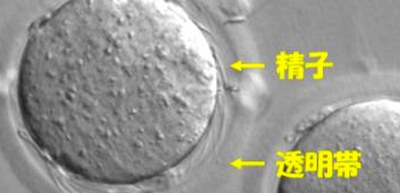
Three genes required for sperm−oocyte fusion identified by genome editing system
A group of researchers from Osaka University and Baylor College of Medicine (U.S.) has clarified that sperm proteins SOF1, TMEM95, and SPACA6 are required for sperm−oocyte fusion.
On ejaculation, sperms pass through the female reproductive tract, reaching the oviduct ampulla where a sperm and an egg meet. The sperm penetrates the zona pellucida of the egg, adheres to the oocyte membrane, and fuses with the egg. Spermatozoon brings male genes (23 chromosomes) to the oocyte, permitting oocyte activation and completing fertilization.
IZUMO1 and FIMP on the spermatozoa and CD9 and JUNO on the oocyte membrane were identified as fusion-required proteins; however, the molecular mechanisms underpinning sperm−oocyte fusion were not well understood.
Although IZUMO1, an immunoglobulin superfamily protein, was identified in 2005 as a factor necessary for fusion, other sperm-related fusion factors have remained unknown.
Using CRISPR/Cas9, a genome editing system, this group has generated knockouts (KOs) of multiple male reproductive organ-specific genes, performing phenotypic screening of these null mutant mice in order to identify proteins essential for male fertility.
In this study, the researchers demonstrated that testis-enriched genes, SOF1, TMEM95, and SPACA6, encode sperm proteins required for sperm−oocyte fusion in mice. SOF1, TMEM95, and SPACA6 KO spermatozoa, respectively, penetrated the zona pellucida and carried IZUMO1 but couldn’t fuse with the oocyte plasma membrane.
This suggests that SOF1, TMEM95, and SPACA6 may directly or indirectly regulate membrane fusion via an IZUMO1-independent pathway or act as fusion mediators downstream of the interaction between IZUMO1 and JUNO. The results of this study show that sperm−oocyte fusion is a complicated process that is mediated by multiple factors.
In Japan, about one in 6 couples have infertility problems, which is considered a social issue. This group’s achievements will lead to examining these genes in genetic tests for male infertility and developing infertility drugs and contraceptive agents.
Figure 1
Figure 2
The article, “Sperm proteins SOF1, TMEM95, and SPACA6 are required for sperm−oocyte fusion in mice,” was published in Science Advances at DOI: https://www.pnas.org/content/117/21/11493
